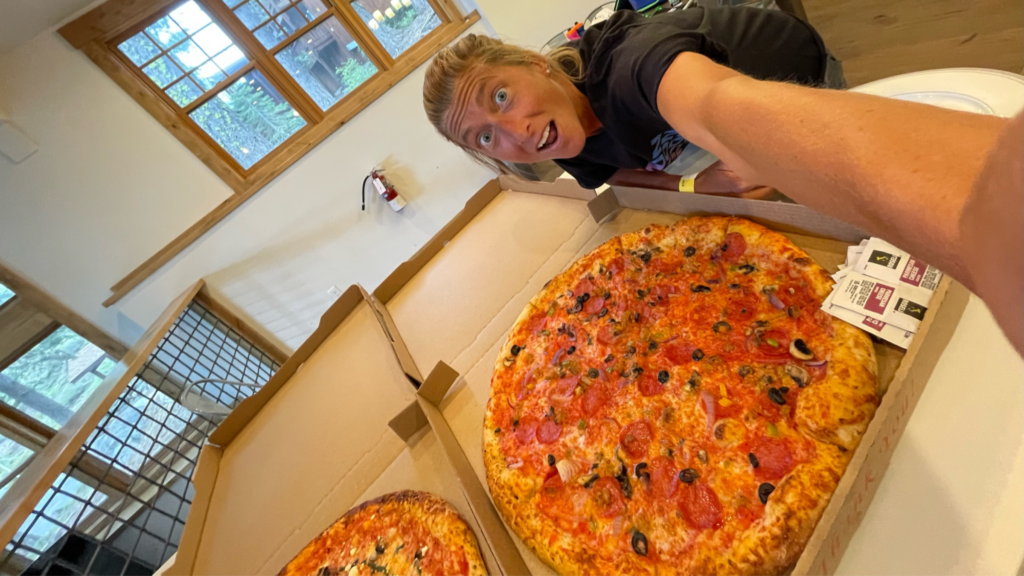Exploring the Diets of Top Ultrarunners: A Look into Their Nutrition Strategies
The world of ultrarunning extends beyond long distances and grueling races; it’s also significantly influenced by nutrition. Many might view ultrarunning as a high-calorie eating contest, with elite runners consuming large amounts of carbohydrates during races. Despite their impressive performances, the everyday diets of these athletes are often quite relatable. Discovering how ultrarunners fuel their bodies, both during training and competition, provides valuable insights into effective nutritional strategies. Ultrarunning nutrition plays a crucial role in enhancing performance and recovery.
One of the standout names in ultrarunning is Courtney Dauwalter, a 40-year-old athlete known for her remarkable race victories, including records at prestigious events like the Western States 100 and Ultra-Trail du Mont-Blanc. Dauwalter’s approach to nutrition is as impressive as her racing skills. Although she has a penchant for nachos post-race, her mid-race nutrition is meticulously planned. By opting for products she knows work for her system, such as Tailwind mix, she ensures her endurance is matched by effective fueling strategies.
When examining Dauwalter’s daily meals, her breakfast typically includes coffee and various options such as oatmeal or Greek yogurt with granola. Lunch is often a combination of snacks, enabling her to maintain energy without lengthy meal breaks. Meals like pasta or chili are a regular feature for dinner, often prepared in bulk with plenty of seasoned veggies and proteins. Dessert remains important to her as well, featuring a variety of sweets from ice cream to fruity candies.
Another prominent figure is Rod Farvard, a former triathlete transformed into a leading ultrarunner. After consulting with a dietitian, he recognized the need to replenish fluids lost during races. His nutrition journey highlights the importance of hydration and tailored diet plans adapted for varying race conditions. Farvard’s meals mostly consist of hearty breakfasts, including smoothies packed with fruits, seeds, and proteins, while lunch often contains protein-based leftovers to fuel his demanding training schedule.
Similarly, Rachel Drake, an emerging star in ultrarunning and an anesthesiology resident, showcases the intersection of nutrition and a busy lifestyle. Her day begins with Scottish oatmeal and smoothies, followed by hearty lunches that often include tuna sandwiches. Snack time is significant for Drake, as she enjoys a variety of options from pretzels with hummus to chocolate-covered treats. Her family-oriented approach to meals integrates nutritious options that accommodate her toddler, ensuring she maintains a practical yet balanced diet.
Tyler Green, Drake’s partner and a consistent top performer in ultrarunning events, often handles cooking responsibilities. His meals are simple but effective, emphasizing nutrient-dense options such as chicken, various grains, and seasonal vegetables. Green focuses on creating meals that provide sustained energy for training and races while ensuring that fruit is a staple in his diet. His unique preference for nectarines showcases the importance of seasonal fruit in an athlete’s diet, which can help keep meals fresh and enjoyable.
Understanding the dietary habits of these ultrarunners not only provides insight into their individual preferences but also illustrates common themes in ultrarunning nutrition. Key strategies include focusing on hydration, meal prepping, and balancing macronutrients to support energy needs during intense physical activity. The importance of consistency in eating patterns cannot be understated, as each athlete tailors their diet to their lifestyle and training requirements. As ultrarunning gains popularity, the knowledge shared by these athletes can serve as a valuable resource for aspiring runners and health enthusiasts alike.
In summary, ultrarunning nutrition is an integral part of a successful runner’s training regimen. Through effective meal planning, hydration strategies, and the incorporation of personal preferences, athletes like Courtney Dauwalter, Rod Farvard, Rachel Drake, and Tyler Green showcase how their dietary choices support their exceptional performances. By implementing similar strategies, aspiring ultrarunners can better prepare themselves to tackle the challenges of long-distance running.
